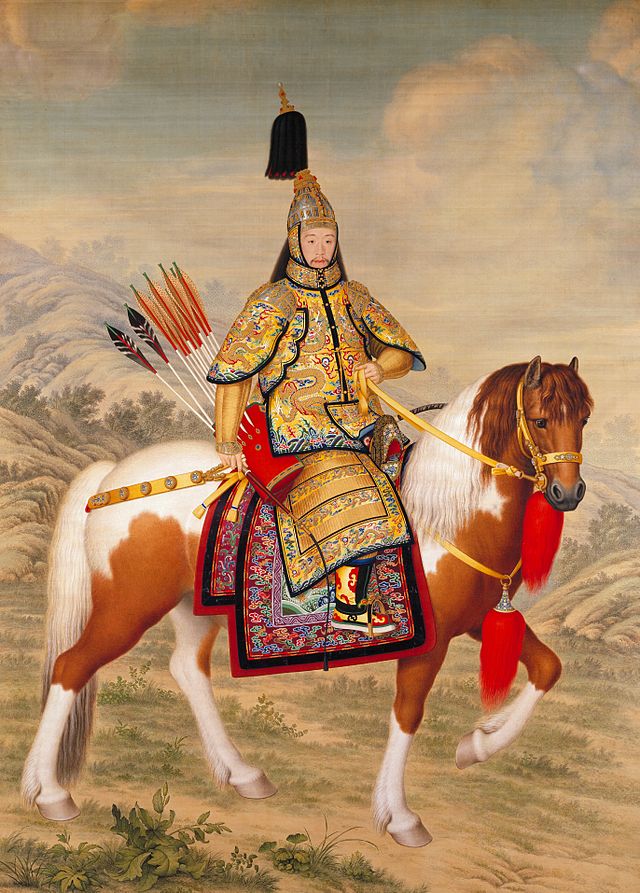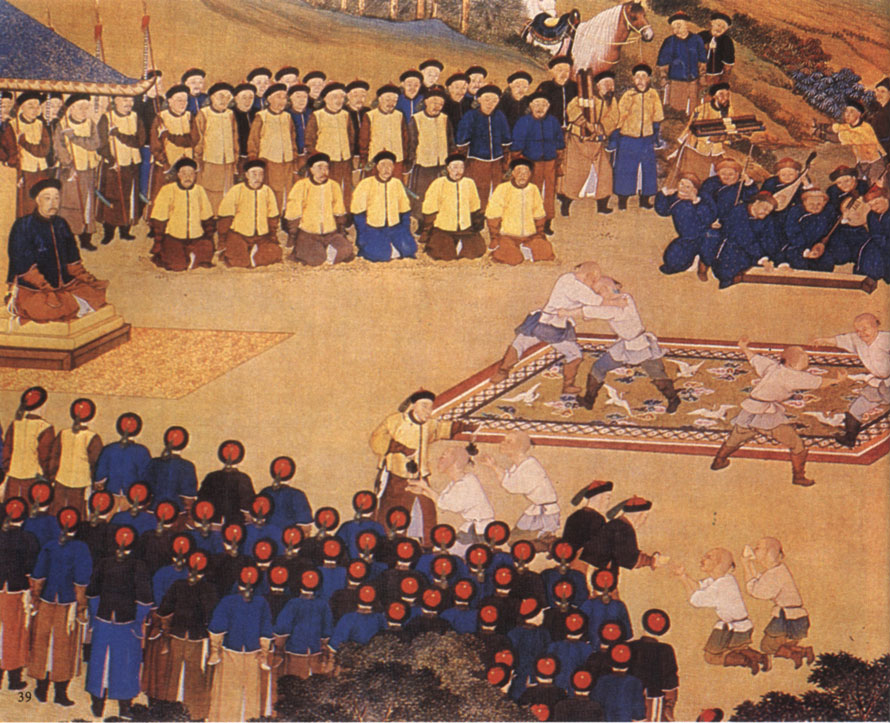yahoocom1984
FULL MEMBER
New Recruit
- Joined
- Feb 19, 2015
- Messages
- 73
- Reaction score
- 0
- Country
- Location
Dzungar people is one of three braches of Mongolian people, before 18th century they are called "western Mongols" by Chinese central government.
There are three brabches of Mongolian tribes:
1. Northern Mongols (Today's Mongolia)
2. Western Mongols (Today's Northern and central parts of Xinjiang)
3. Southern Mongols (Today's inner mongolia province of China)
Dzungar people is called "western Mongols" and their primary religion is Tibetan Buddhism, and they are the most powerful mongols by that time. They controlled most parts of today's Xinjiang.
Dzungar was constantly attacking Northern Mongols and Southern Mongols, and made other two branches of Mongols to ask helps from Chinese central government.
The Dzungars converted to Tibetan Buddhism around 1615. The Dzungars were a confederation of several Oirat tribes that emerged suddenly in the early 17th century. The Dzungar Khanate was the last great nomadic empire in Asia. Some scholars estimate that about 80% of the Dzungar population, or around 500,000 to 800,000 people, were killed by a combination of warfare and disease during or after the Manchu conquest in 1755–1757
Location Dzungar Khanate (Dzungaria, Western Mongolia, Kazakhstan, northern Kyrgyzstan, southern Siberia)
Date 1755–1758
Target Zunghars
Attack type: mass murder
Deaths 80% of the Dzungar population
Perpetrators Qing dynasty (Manchu Eight Banners), Khalkha Mongols, Inner Mongols
The Dzungar genocide (Chinese: 准噶尔灭族; pinyin: Zhǔngá'ěr mièzú) was the mass extermination of the Dzungar people by the Manchu Qing dynasty of China.
The Qianlong Emperor

The Qing Manchu Qianlong Emperor ordered the extermination to punish the Dzungar leader Amursana's rebellion against Qing rule after the dynasty first conquered the Dzungar Khanate with Amursana's support before he rebelled in 1755.
The genocide was carried out mainly by Manchu Bannermen and Khalkhas, who were part of the Qing force sent to crush the Dzungars.
Uyghurs from Turfan like Emin Khoja who were vassals and allies of the Qing, helped supply its forces during their war against the Dzungars.
After wiping out the native population of Dzungaria, the Qing then resettled Han Chinese, Hui, Uyghur, and Xibe people on state farms in Dzungaria along with Manchu Bannermen to repopulate the area.
The Dzungar genocide painting

The Qing "final solution" of genocide to solve the problem of the Dzungars made the Qing sponsored settlement of millions of Han Chinese, Hui, Turkestani Oasis people (Uyghurs) and Manchu Bannermen in Dzungaria possible, since the land was now devoid of Zunghars.
The Dzungarian basin, which used to be inhabited by Zunghars is currently inhabited by Kazakhs.In northern Xinjiang, the Qing brought in Han, Hui, Uyghur, Xibe, and Kazakh colonists after they exterminated the Zunghar Oirat Mongols in the region, with one third of Xinjiang's total population consisting of Hui and Han in the northern are, while around two thirds were Uyghurs in southern Xinjiang's Tarim Basin.In Dzungaria, the
Qing established new cities like Urumqi and Yining. The Qing were the ones who unified Xinjiang and changed its demographic situation.
But after over 100 years of Dzungar people's genocide, in 1864, a Hui rebellion broke out in Xinjiang, and they killed most of Manchu and Xibe people in Xinjiang.
Before the masscre of Manchu people by Hui muslims, by 1864, there were already 1 million Manchu people settled in XInjiang for several generation, but after 1864's Hui rebellion, the Manchu population in Xinjiang dropped to almost zero.
There are three brabches of Mongolian tribes:
1. Northern Mongols (Today's Mongolia)
2. Western Mongols (Today's Northern and central parts of Xinjiang)
3. Southern Mongols (Today's inner mongolia province of China)
Dzungar people is called "western Mongols" and their primary religion is Tibetan Buddhism, and they are the most powerful mongols by that time. They controlled most parts of today's Xinjiang.
Dzungar was constantly attacking Northern Mongols and Southern Mongols, and made other two branches of Mongols to ask helps from Chinese central government.
The Dzungars converted to Tibetan Buddhism around 1615. The Dzungars were a confederation of several Oirat tribes that emerged suddenly in the early 17th century. The Dzungar Khanate was the last great nomadic empire in Asia. Some scholars estimate that about 80% of the Dzungar population, or around 500,000 to 800,000 people, were killed by a combination of warfare and disease during or after the Manchu conquest in 1755–1757
Location Dzungar Khanate (Dzungaria, Western Mongolia, Kazakhstan, northern Kyrgyzstan, southern Siberia)
Date 1755–1758
Target Zunghars
Attack type: mass murder
Deaths 80% of the Dzungar population
Perpetrators Qing dynasty (Manchu Eight Banners), Khalkha Mongols, Inner Mongols
The Dzungar genocide (Chinese: 准噶尔灭族; pinyin: Zhǔngá'ěr mièzú) was the mass extermination of the Dzungar people by the Manchu Qing dynasty of China.
The Qianlong Emperor

The Qing Manchu Qianlong Emperor ordered the extermination to punish the Dzungar leader Amursana's rebellion against Qing rule after the dynasty first conquered the Dzungar Khanate with Amursana's support before he rebelled in 1755.
The genocide was carried out mainly by Manchu Bannermen and Khalkhas, who were part of the Qing force sent to crush the Dzungars.
Uyghurs from Turfan like Emin Khoja who were vassals and allies of the Qing, helped supply its forces during their war against the Dzungars.
After wiping out the native population of Dzungaria, the Qing then resettled Han Chinese, Hui, Uyghur, and Xibe people on state farms in Dzungaria along with Manchu Bannermen to repopulate the area.
The Dzungar genocide painting

The Qing "final solution" of genocide to solve the problem of the Dzungars made the Qing sponsored settlement of millions of Han Chinese, Hui, Turkestani Oasis people (Uyghurs) and Manchu Bannermen in Dzungaria possible, since the land was now devoid of Zunghars.
The Dzungarian basin, which used to be inhabited by Zunghars is currently inhabited by Kazakhs.In northern Xinjiang, the Qing brought in Han, Hui, Uyghur, Xibe, and Kazakh colonists after they exterminated the Zunghar Oirat Mongols in the region, with one third of Xinjiang's total population consisting of Hui and Han in the northern are, while around two thirds were Uyghurs in southern Xinjiang's Tarim Basin.In Dzungaria, the
Qing established new cities like Urumqi and Yining. The Qing were the ones who unified Xinjiang and changed its demographic situation.
But after over 100 years of Dzungar people's genocide, in 1864, a Hui rebellion broke out in Xinjiang, and they killed most of Manchu and Xibe people in Xinjiang.
Before the masscre of Manchu people by Hui muslims, by 1864, there were already 1 million Manchu people settled in XInjiang for several generation, but after 1864's Hui rebellion, the Manchu population in Xinjiang dropped to almost zero.
Last edited:


